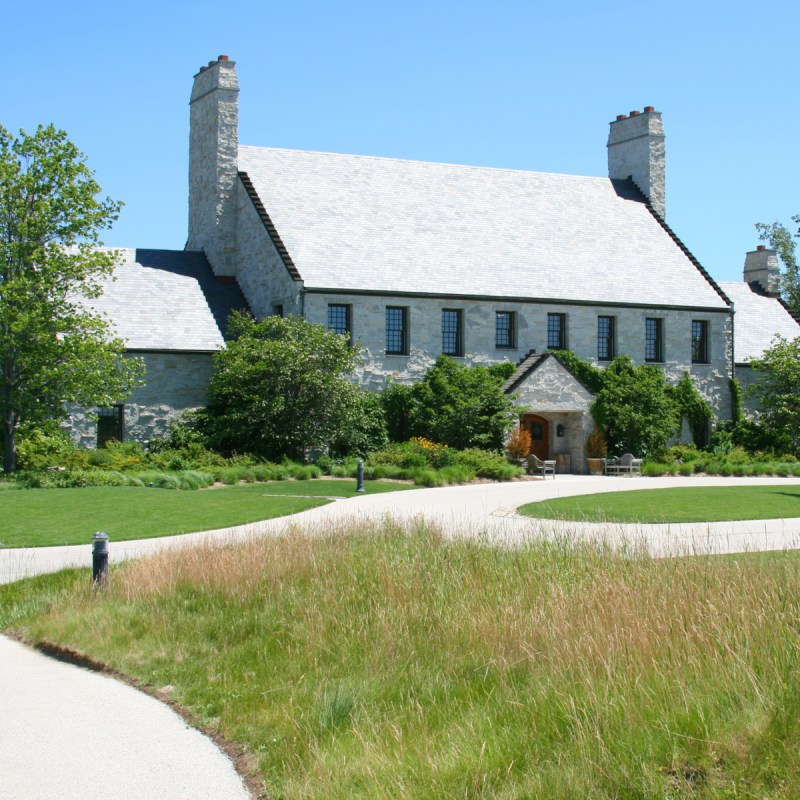
When a discussion about wine turns to Bordeaux — and, eventually, all wine talk turns to Bordeaux — the conversation usually veers in one of two directions. You either chat about this French region’s exquisite red wines, bold, complex, legendary, or its lesser-known but still revered whites, refined, elegant, crisp, and clean. Certainly, you don’t hear many people talk about fungus! But there’s a fungus-fueled wine in Bordeaux that’s a must-try for any wine lover.
Videos by TravelAwaits
I had the opportunity to try these unique wines on a recent press trip to the region. The fungus in question is called botrytis. But in wine-making circles, it’s referred to as “noble rot.” That’s because the strange phenomenon which is botrytis makes for magical, regal sweet wines — not to mention an incredible travel experience!

These Wines Are Sweet
In just about any other kind of food, I’d say that fungus is not your friend. But botrytis works wonders on the grapes, concentrating their sugars and imparting a rich flavor. Common tasting notes are honey, flowers (like acacia blossoms), dried fruit, candied fruits, citrus fruits, tropical fruits like pineapple and guava, and even spun sugar and toasted sugar (like cotton candy or crème brulée!)
… But You Don’t Want To Pair Them With Sweet Foods
How many times have you heard that sweet wines are great for dessert? But the botrytis winemakers I spoke to in Bordeaux were all passionate about doing the exact opposite. Dessert is sweet enough as it is! Instead, think of your sweet wine as the ultimate component to balance a complex plate of salty, acidic, bitter, sour, and umami flavors.
With this advice in mind, I’ve had botrytis wines alongside a salad of peppery arugula dressed in fruity olive oil, with tomato-ginger jam and salty grilled halloumi. The wine was equally good next to a creamy green curry made with coconut milk and shrimp and it went beautifully alongside sugar-free desserts of poached apple, almond milk cream, and crunchy buckwheat brittle. The wine is often paired with herb-infused poultry (like a roasted chicken or Thanksgiving turkey scented with sage, thyme, and rosemary) or rich Asian cuisines (like Japanese curry). And I think a classic French sandwich of salty ham, sharp cheese, and pungent mustard would be the ideal match for a sweet botrytis wine.
They’re Also Complex
You won’t just be enjoying the sweet impact of the botrytis fungus. You’ll also have the underlying grape, just like with any other wine. During one tasting I attended, I was shocked when I caught notes of green bell pepper in my wine. Um, this isn’t a sweet flavor! Naturally, I immediately lied when the proprietor asked me what I could taste. But shame on me for not going with my first instinct. When I did a little research after the fact, I learned that the green vegetables were indeed a common tasting note for the wine I was trying! Throughout my trip, I also picked up on notes of saffron, clove, strawberry, pear, dill, oak, smoke, leather, tobacco, and many more.

White Grapes Are Always Used
While botrytis can occur on any kind of grape, only certain varieties of white wines are used to make a botrytis wine. That’s because their skin is thin enough for the fungus to impact the flavors developing on the inside of the grape. Semillon and sauvignon blanc are most commonly used, and their rich flavor profiles can range from green and herbaceous (hello, bell pepper!) to earthy and mineral-rich.
Every Bottle Is Unique
Soil, sun, shade, age of the vines, winemaking techniques, length of fermentation, and style of fermentation (for instance, stainless steel vats or small oak barrels) are all factors that leave their mark on the finished result.
Frankly, all this complexity is a darn good thing. Botrytis wines are just like any other, and there will be some bottles you like and others you don’t. There’s a lot to discover — and your nose is never wrong!
Production Is A Real Labor Of Love
There are no shortcuts when it comes to making botrytis wines. Each vine is typically harvested three times so that the grapes can be selected at just the right stage of development. (This is a polite way of saying that they have to be fungus-y but not too fungus-y.)

The Grapes Look Rough But Taste Good
The ideal grape is a bit shriveled, has a dusting of gray fungus, and looks a bit worse for wear. While they’re not the most appealing to look at, they actually do taste good, or so I’m told. I was too wimpy to give a raw grape a try, but my colleagues did and gave a positive report.
Botrytis Might Just Hold The Secret Of Eternal Youth
Locals like to say that you should eat a botrytis grape or two every day, as they’re good for maintaining a youthful glow. There’s a good chance this is just a tall tale! However, any time a winemaker poped one of the withered grapes into their mouth, there was always a joke that they were really 90 years old but looked 45, thanks to the botrytis.
Supply Is Limited
Botrytis wines account for just 1 percent of the wine volume in Bordeaux, but 2 percent of the vineyard space. That’s because this is a low-yield kind of crop. Not every grape is affected in just the right way by the fungus, so there’s a bit more waste, and thus it takes more grapes for each resulting bottle.

Botrytis Reflects The Heart Of Bordeaux
Bordeaux may be famous for its big, bold reds, but I’d argue that it’s the little-known botrytis wines that are the true heart of the region. That’s because these wines aren’t just a product of the soil but also of the water. The grapes used specifically for the production of botrytis wines grow on either side of the Garrone River. A combination of factors, including the course of the river, the influence of the nearby Atlantic Ocean’s gulf stream, and the topography of the land, come together to create an early morning mist. This mist coats the adjacent grapes and, where you have dampness, well, you guessed it. You’ll also have fungus!
Only A Handful Of Appellations Have What It Takes
The very specific growing conditions for botrytis wines are only found in Bordeaux, and just a small part of the region at that. There are dozens of appellations (protected designations of product origin) in Bordeaux but only a handful produce botrytis wines. They include Sauternes (which brought botrytis wines into prominence) and its neighbor, Barsac, along with less well-known appellations including Bordeaux Moelleux (a region that includes more than 500 villages), Cerons (home to just 14 wine producers), Bordeaux Superieur (famous for beautiful landscapes), Premieres Cotes de Bordeaux (home to the Citadel of Rions), Cadillac (home to the walled village of the same name), Loupiac (notable for a Gallo-Roman villa), Sainte-Croix-du-Mont (well known for having a fossilized oyster bed), and Saint-Maccaire (another tiny appellation with just 14 producers).

Visiting Botrytis Wine Vineyards Is Easy
There are many packaged wine tours in Bordeaux, but botrytis wines aren’t featured in many. However, I did find one offering with Wine Path tours. I hope more options soon emerge! But a DIY tour with your own car is easy to arrange and local tour guides and museums (including the Maison des Vins in Cadillac) can help point you in the right direction.
Some of my favorite vineyards include Chateau Biac (which offers gorgeous river views), Chateau de Cerons (the chateau itself has a remarkable history), and Chateau Loupiac Gaudiet (a multigenerational family estate).
Pro Tip: Back Home, Botrytis Is A Good Deal
At your local wine stores, you’re unlikely to find a botrytis wine in the bargain section. Like any rare niche wines, they’re costly. However, I still think they’re a great buy because botrytis wines easily keep in your fridge for up to 3 weeks after opening. Plus, specialty products like this are often available in smaller, half-sized bottles, which are an affordable option when you want to try some new selections. Don’t hesitate to give it a try — and start planning your next escape to Bordeaux!
